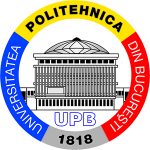The ROBIN-Cloud project aims to create software modules and services for robots in a digital interconnected society, enabling companies to develop complex, intelligent and performing products and services for these users as well as the society as a whole. Such robot systems are based on sensors, which retrieve and analyze data, respectively extract higher level information, based on which rule systems are built. These data processing systems (often large, or generated in high-speed feeds – e.g., a camera mounted on a stand-alone machine captures several frames per second) require increased processing and storage capabilities, which is why many companies prefer to use, where possible, a Cloud support environment. In this way, the Data is captured by the sensors, transferred through various communications technologies (wired or wireless) to the Cloud environment, where data processing and retrieval is carried out, which is then transmitted back to smart decision-making mechanisms. More and more Cloud Robotics is spoken, and intensive processing, including powerful learning algorithms, required for complex robot tasks can be performed in Cloud. Robot systems need guarantees on the response time of the result, in which case the time for data transfer in the Cloud begins to count. This is one of the arguments behind the Edge Computing model, where processing and analysis mechanisms are brought as close as possible to the data collected. In the project, this means creating Cloud extensions to its edge, so close to the sensors we can imagine the positioning of processing boards or set-top boxes that take over from processing (processing those critical data), respectively the extension to Cloud less critical data processing, long-term predictions).
ROBIN CLOUD
OBJECTIVES
The purpose of the ROBIN-CLOUD project is to create a support platform for collecting data that are collected through the sensors of robot support systems (e.g. IoT), offering processing and learning mechanisms combining Cloud models with devices that are close to the collection source, offering support libraries for intelligent / semantic data processing, and ultimately the development of Web services centered on economic agents interested in the use of the stored data on the platform.
The specific objectives of the project are:
- Designing and building a support platform for the collection and the systematization of the captured data from IoT systems and robots, over the ARM IoT-A architecture.
- Designing and implementing of distributed processing and learning mechanisms based on sensor data, Cloud / Edge Computing Hybrid Technology (Complex Event Processing and Context Broker components).
- Developing a library of semantic data processing algorithms on Cloud platforms.
- Designing and implementing techniques, methods and algorithms for the search and the retrieve of knowledge from the Data Warehouse at ROBIN-Cloud platform.
- Cloud development of machine learning support tools (deep-learning, deep-learning, support vector machines, etc.) specific for processing natural language, autonomous machines and collaborating robots in the social environment.
- Intelligent and adaptive planning by creating a set of algorithms for: Cloud processing, SLAM pairing, Autonomous machine route planning, Natural language analysis, etc.
- Designing, developing and testing of web tools and services for businesses.
Originality and innovation:
The originality of the ROBIN-Cloud solution is the extension of the main Cloud functionalities through a new and general concept of micro-services interoperable with FIWARE, IoT-A, and others, providing support for the collection, storage, processing and retrieval of knowledge / learning, for the projects defined within the ROBIN project. We think that, it is a new and ambitious approach given the character of generality assumed, the modeling being supported by interoperability, the technologies envisaged being modularly implemented to allow adaptation to new working scenarios and easy migration into new applications. Another original aspect of the proposed research is the use of the Cloud-Edge to allow robots to access Cloud behaviors and abilities (from a behavioral library to SLAM) and to share detailed environmental maps, knowledge, interactions, smart planning and machine learning processing that was hard to achieve in local memory with the local processing capabilities of the robots.




